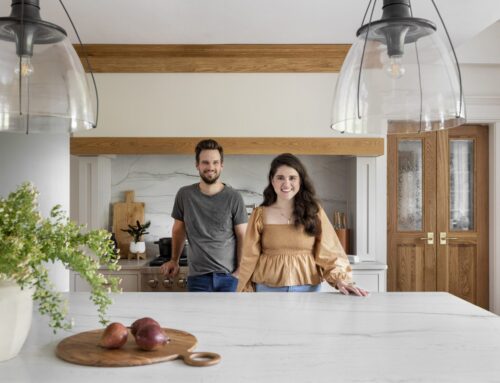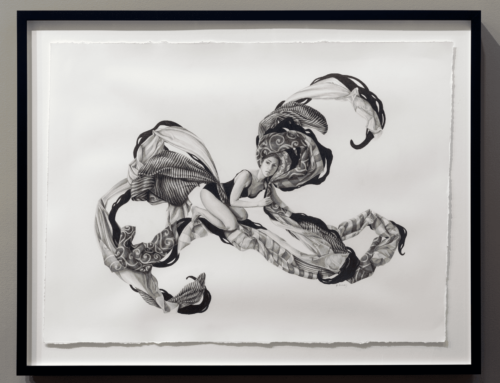Ron York of York & Friends Fine Art in Nashville has been buying art pieces for so long his collection has turned several times over the years. Yet he just can’t stop collecting. “I opened my first gallery nearly 30 years ago, and some of the artists I work with right now, I have been working with for over 25 years; so, my collection includes work by friends, work by people I work with and people I wished I worked with, and from collecting things that I love,” he says.
People have many reasons for starting curating an art collection, from a need driven by design to simply falling in love with a piece. And local galleries can help handle you manage all aspects of your investment.
A BONDING EXPERIENCE
Joy Craft, owner of the gallery All About Art in Hendersonville, Tenn., offers a program called ‘On Approval.’ She encourages designers to select several paintings for a client and allows them released on loan for a few business days so the designer and homeowner can make a final decision. “Some clients trust their designer to choose lots of things, bring them home and make recommendations,” Craft says. “Even if they only have space for one or two paintings, they take several options so they can determine which works best with the lighting and overall setting. They bring back what didn’t work in the home.”
Craft notes that trying a piece of art in a home is imperative to being sure you are making the right decision, especially if design compatibility is a top consideration. “Each homes has natural light to play with, as well as lamp light. A gallery piece can look completely different in a home, depending on the placement.”
All About Art stocks a large collection of high-end decorative art, original oil paintings and acrylics that complement many design styles and sizes, even those appropriate in size for a two-story vaulted ceiling. And if they don’t have the size, color or style on hand, they will consult with their art representatives who travel around and bring work to them.
“If a client is looking for a particular theme or color pallet and we don’t have it in the shop, we can get it shipped to us so that the client or designer can view the piece,” Craft says.
IMPACT OF GROUPING
Often a group of similar prints or paintings is a better solution than one single installation, suggests Kelly Harwood, owner of Gallery 202 in Franklin, Tenn., that specializes in original paintings, sculpture and art glass.
“Often when a homeowner moves to a new house with many more walls than they previous had, they may feel that they have to get big, big pieces; but they don’t have to do that,” Harwood says. “A grouping of landscapes or image study, when framed properly can be very pleasing while offering a proper scale to the space.The result can also suggest an art collection developed over time rather than something framed strictly for immediate design impact.”
MATCHMAKING
Even if you are only buying a work of art to enhance a room’s décor, the art should be a piece you find provocative or moving. While the work needs to be a good match for the homeowner, it does not need to match the couch or rug. Art brings life to a space, and you do not want it to serve as mere camouflage.
“Always buy what you want to live with,” suggests York. “I did interior design for 25 years so there is a part of me that does want the artwork to complement everything else, but it doesn’t have to match everything. Rooms and environments are much more interesting if there is something a little unexpected in there and the palate is not so perfect or uniform.”
York thinks every room should have something unexpected in it, if nothing else to get people talking. “If art is perfectly matched, nothing stands out,” he says. “But to throw something unexpected in, whether they like it or not, it started a conversation. One of my artists, Bradley Tyler Wilson, creates whimsical colorful figures; one of Wilson’s paintings in a room will start a conversation and pull people into the space.” Ginger Oglesby, an abstract artist represented by York & Friends Fine Art in Nashville is an example of the perfect piece to add in the mix with more traditional works to offer a fresh look and welcome contrast.
Gallery 202’s Kelly Harwood agrees people shouldn’t get too caught up in whether a piece will work for one room, because it might look great in another once you do take it home and begin the bonding experience.
“If you love something you will find the perfect wall for it,” says York. “Even if you have to move something. Fall in love with the art, then find its place in your home.”
And if all else fails, Joy Craft with All About Art reminds that a commissioned work of art can be made for a precise scale, lighting, and placement in a home. “Our artists can make something custom and compelling for their home,” Craft says.
DIVERSIFY THE PORTFOLIO
When homeowners are concerned about art as an investment, their best bet is to have a good mix in their portfolio of local emerging artists along with more established artists. “We have one artist, Joel Knapp, and people come in seeking his work because he has become so well known,” says Joy Craft. “His great reputation means that his works continue to appreciate in value.”
Ron York represents Lassie McDonald Crowder’s timeless oil landscapes, and notes these are ideal for traditional interiors or as a healthy mix within a contemporary setting. Crowder’s pieces offer a feel of something collected and handed down through the years, he notes. Gallery owners agree that a diverse portfolio is a stronger portfolio, as with all other investment guidance.
Other customers prefer artists who are new to a gallery, who may offer a different dynamic than an established painter or printmakers. “We have several people who want to invest in an emerging artist because they like their style and there is good ‘buzz’ going around about them; those clients appreciate that they get to invest in the future of a local or regional artist,” says Craft.
When Ron York’s clients are interested in an investment he also encourages consideration of new artists who may use a variety of mixed media or different intensity of subject matter. “When investment conversations come up, I generally point clients in the direction of an up-and-coming artist, someone who is fairly new on the scene but getting a great response. Such works will be available at a good price, with an increase in price to be expected in the near future,” he says.
Of course, investing in art is market driven; so seek art that moves you, because it will likely fascinate someone else as well should you need or want to sell. “It can get kind of tricky,” admits Joy Craft. “Luckily we are on an upturn in interest in fine art and things are back to a stable market where things are appreciating in value once again.”
Kelly Harwood with Gallery 202 thinks people should focus less on art as an investment, and more on the joy of owning a work of art. “After all, you’ll never be disappointed walking by a piece you absolutely love no matter what someone else thinks it is worth,” she says.
“Your home should reflect art from different places you have traveled, from different memories you have experiences, so that you develop a personal collection that pleases you,” Harwood adds.
Developing a relationship with a trusted gallery is essential for any art investor If you are going to grow a collection driven by investment decisions as much as content, Keith Merry of Garden Park Antiques says the internet is an essential tool for research, but so is expert advice from those who know markets and trends. “You have to be knowledgeable and you have to be experienced if you are going to collect from an investment standpoint,” Merry says. “If you don’t know what you are doing and you don’t have years of experience doing it, it is not going to come out well. It is like trading stocks. You can get burned.”
TAKE YOUR TIME
Joy Craft adds, “You are going to walk by a work of art you place in your home every day, and every day there is going to be an emotion that comes from that piece of art,” she says. “So,it is okay to have empty walls for a while and patiently wait for that certain piece that really reaches you and evokes a powerful emotion.”
Often our favorite collections begin without a lot of intention or over thinking. Keith Merry says his own collection of antique gate finials and adornments started accidentally. “A lot of people don’t realize they are collecting in the beginning,” he says. “It is usually something you have a personal passion or interest in, and it just becomes part of your life after a while whether it is finials, antique radios or paintings by a particular school of art or artist. Anyone can begin growing a passion.”
“You can collect everything from baby dolls to letter openers. It is endless and that is what makes collecting fun,” Merry says. “And it should be fun. That is really what it is all about, that you enjoy the things you find, as well as the thrill of the hunt for those items.”
Craft says she has a client or two who now have collections so big they cannot display the entire collection at one time. Gallery owner and designer Ron York himself is in the same position. “I never thought I would be one of those people who didn’t have everything up on the wall, but I am to the point now that I have some wonderful things that I just haven’t found a spot for yet,” says York.
Kelly Harwood recalls buying his first painting twenty years ago, a piece he couldn’t afford at the time and had to use a layaway option. “I just knew I really wanted that piece and I worked hard to buy it because it made me happy,” he says. “I still have it and still love it. My collection grew from that one determined purchase. I have gradually replaced mass produced prints with original paintings over the years, whenever I could afford it. As a gallery owner and artist I like to see people save their prime wall for a great piece of art instead of just putting something up as ‘filler’ art.”
For more information, visit:
Designer Ron York, York and Friends
All About Art, Hendersonville, Tenn.
Kelly Harwood’s Gallery 202, Franklin, Tenn.
Keith Merry, Garden Park Antiques, Nashville






Leave A Comment
You must be logged in to post a comment.